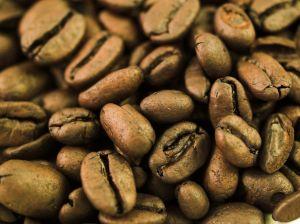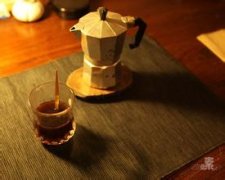Baristas must see the explanation of the terms of the fine coffee industry.

About coffee beans:
* Coffee cherry: the fruit of a coffee tree, named because its rind is bright red and its shape is very similar to cherries.
* round beans: when the coffee fruit is growing, one of the two seeds develops very well, and the other seed is eaten so that the coffee bean that should be oval becomes round.
* Elephant beans: bigger than ordinary coffee beans and usually insipid in taste.
* Coffee belt (Coffee Zone): usually refers to the area between the Tropic of Cancer and the Tropic of Cancer, because this area is the most suitable for growing coffee.
* drying: the use of sunlight to separate the pulp of coffee from the seeds to obtain raw beans.
* washing: the use of water to separate the pulp of coffee from the seeds to obtain raw beans.
* semi-washing: the way in which the first half is sunburned and the second half is washed to separate the coffee pulp from the seeds to obtain raw beans.
* aged beans: preserve raw beans in good condition for several years to develop a deeper flavor.
* boutique coffee: coffee, which is extremely carefully processed from planting and harvesting, can be said to be the top product in the coffee industry, which is different from the coffee produced in large quantities. At present, there are boutique coffee associations (SCAA and SCAE) in the United States and Europe, which specialize in the promotion of boutique coffee.
* Arabica (Arabica): coffee variety, the only coffee variety with 44 chromosomes, is of good quality but not easy to take care of, and is currently the most important variety in the coffee market.
* Robusta: a variety of coffee with large output, easy to take care of but poor quality. It is mainly used to make instant coffee. Robusta is the main variety second only to Arabica on the market.
* Silver skin: a thin film on the surface of raw beans that usually falls off when baked.
* the first explosion: the bursting reaction of coffee beans during roasting when the temperature is 190? F / C / 200?
* the second explosion: during the roasting process of coffee beans, when the temperature is about 230 degrees Celsius, the burst sound is smaller and denser than the first explosion.
* exhaust reaction: the reaction in which coffee beans continue to emit carbon dioxide after baking.
* raise beans: do not drink coffee beans immediately after drying. Store for a few days to complete the exhaust reaction, so that the flavor of coffee beans is fully ripe.
* defective beans: raw beans with broken, abnormal or moth-eaten appearance.
For coffee utensils:
* Propeller bean grinder: a bean grinder with a knife shaped like a propeller.
* disk type bean grinder: a bean grinder whose knife is of flat plate type.
* Cone bean grinder: a bean grinder with a tapered knife.
* Bean storage tank: the space above the bean grinder to store coffee beans.
* Bean trough: the place at the bottom of the bean grinder to receive the ground coffee powder, and the bean trough for business use is usually the dispenser.
* dispenser: a tool for quantifying coffee powder, usually combined with the bean trough of a bean grinder.
* weight reduction board: the small parts attached to some mocha pots are mainly designed to allow users to put less coffee powder.
* pressure relief valve: the valve used to remove the pressure in the cartridge, which will be opened when the pressure reaches the set pressure.
* pressure valve: the valve designed for the accumulation pressure in the cartridge is constructed the same as the pressure relief valve, but with different functions.
* flannel: a material of flannel, which refers to the way flannel is used to filter coffee powder in Zichong coffee.
* Metal filter: in the filter type, the brewing method of coffee powder is filtered by using metal with very fine holes.
* Upper pot: the upper half of the plug kettle.
* Pot: the lower half of the stopper.
* the term Single:Espresso refers to brewing a cup of Espresso from a single portion of coffee beans (about 7g-9g).
* the term "Double:Espresso" refers to the brewing of Espresso from a double portion of coffee beans (about 14g-18g).
* the term Triple:Espresso refers to brewing a cup of Espresso out of three times the amount of coffee beans (about 21g-27g).
* filter: the parts of the Espresso machine containing coffee powder will have different capacities according to different types.
* boil the head: where the Espresso machine comes out of the water.
* filter handle: in an Espresso machine, the handle of the filter is locked on the head of the filter when cooking.
* non-porous filter: filter handle with no outlet, used to clean the brewing head and internal pipe of Espresso coffee machine.
* pump: a device in an Espresso machine that pressurizes water.
* Filler (powder hammer): a tool for compacting coffee powder, preferably made of metal.
* Drum bean roaster: another name is drum bean dryer, whose baking chamber is barrel-shaped and can be rotated to stir coffee beans when roasting.
* Direct-fired bean roaster: a roaster that has no complete barrier between pyrogen and coffee beans and can directly heat and roast coffee beans.
* Air flow bean roaster: a bean roaster that uses hot air to bake coffee beans.
* semi-direct-fire bean dryer: a roaster with both air-flow and direct-fire heating.
Other
* Cupping: a way to test the quality of coffee. Basically, put the ground fresh coffee beans in a cup, pour them into hot water and soak them, then scoop them out with a small spoon without filtering.
* extraction: the necessary substance is dissolved through a liquid and precipitated.
* caffeine: chemical formula C8H10N402, the only nitrogen-containing plant base, refreshing, diuretic, relieving fatigue. Wait, wait, wait.
* Oxidation: substances react chemically with oxygen to form new compounds.
* Caramelization: the chemical reaction during coffee roasting. Mena reaction, also known as the chemical change produced at a high temperature, although there is the word "coke", but has nothing to do with the combustion phenomenon.
* Espresso: a way to brew coffee using high-pressure hot water.
* steaming: when using filter brewing coffee, first pour water into the coffee powder, and then suspend the water injection, so as to extract more coffee flavor by prolonging the contact time between the coffee powder and the water.
* Mocha: mocha may represent three meanings, namely, 1 coffee name, 2 some kind of coffee pot, 3 coffee seasoned with chocolate.
* Atmospheric pressure: the pressure exerted by air on an object on the ground plane. The atmospheric pressure of one square centimeter on the earth is one kilogram, also known as 1Bar.
* A layer of milky substance floating on the surface of Crema:Espresso coffee is the essence of Espresso.
* pull flowers: when pouring milk foam in Espresso, rely on the wrist to shake to form a beautiful leaf pattern on the coffee.
* Barista: Italian respect for professional coffee brewers.
Important Notice :
前街咖啡 FrontStreet Coffee has moved to new addredd:
FrontStreet Coffee Address: 315,Donghua East Road,GuangZhou
Tel:020 38364473
- Prev

Factors affecting the taste of coffee the effect of water quality on the flavor of a cup of coffee
I remember that when I was a child, I directly boiled boiled water to drink, with a little taste of bleach and metal, and many years ago, the advertisement of Nongfu Spring told us that some water was a little sweet. Nowadays, with the popularity of water purifiers and barreled water, we seldom drink cold boiled water. Here, I would like to talk about the influence of water quality on the flavor trend of brewing beverage. Brother Bird is a native of Qingdao.
- Next

Drinking coffee is healthy. Coffee is good for your health.
■ fact 1: coffee is good for your health. Doctors say that coffee has both advantages and disadvantages, so moderate consumption of coffee is the key to benefit from it. Studies conducted by American biologists have shown that drinking two to three cups of coffee a day is more than enough to protect the heart, and if you are overweight, they can also increase metabolism and even reduce your appetite. Coffee contains the same content as green tea.
Related
- Beginners will see the "Coffee pull flower" guide!
- What is the difference between ice blog purified milk and ordinary milk coffee?
- Why is the Philippines the largest producer of crops in Liberia?
- For coffee extraction, should the fine powder be retained?
- How does extracted espresso fill pressed powder? How much strength does it take to press the powder?
- How to make jasmine cold extract coffee? Is the jasmine + latte good?
- Will this little toy really make the coffee taste better? How does Lily Drip affect coffee extraction?
- Will the action of slapping the filter cup also affect coffee extraction?
- What's the difference between powder-to-water ratio and powder-to-liquid ratio?
- What is the Ethiopian local species? What does it have to do with Heirloom native species?

